6 Things We Learned at Climate Week NYC

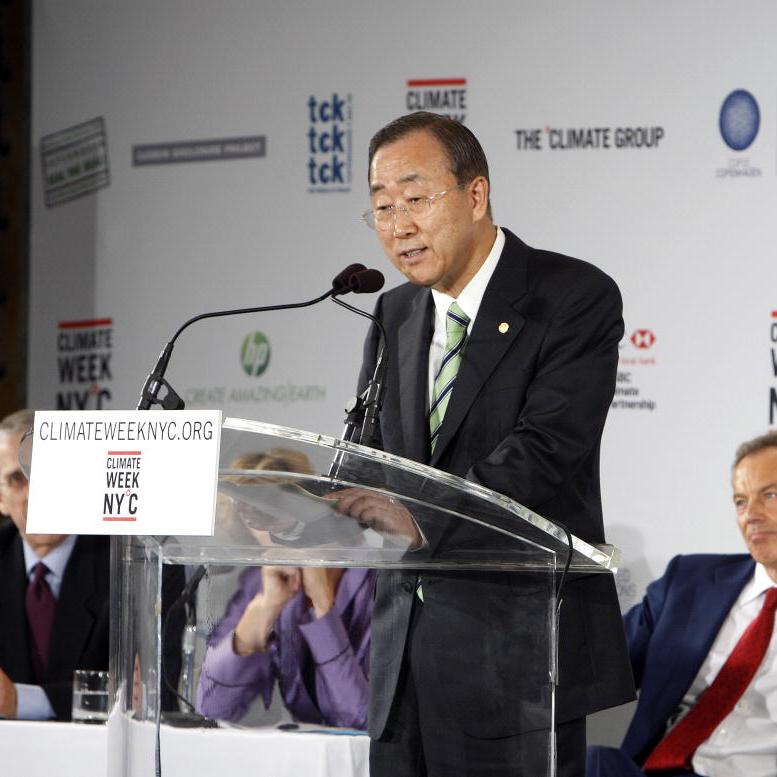
Climate Week 2015 events are heating up all across New York City, and TriplePundit is on the ground reporting. While there's still plenty of action scheduled for the weekend and early next week, we've found plenty to see and explore already.
Can't be in New York in person? Live vicariously through us with these six things we learned so far during Climate Week NYC.
1. All eyes are on Paris
With December’s COP21 climate talks quickly approaching, Climate Week NYC 2015 represents a key milestone event that allows companies and governments to send a timely reminder to negotiators about their desire for climate action. It was tough to go five minutes in New York this week without hearing something about COP21 -- and for good reason.
The negotiations are shaping up to be the biggest, potentially most historic gathering of global climate and environment leaders in human history. Still not quite sure what COP21 is and why it's so important? Check out our cheat-sheet here.
2. But companies aren't waiting for world leaders to take action ...
We're all waiting with bated breath to see what will appear in the Paris text. But that doesn't mean companies are holding off on making big commitments on climate change.
General Mills kicked things off before Climate Week even started: pledging in August to reduce absolute greenhouse gas emissions by 28 percent across its full value chain – from farm to fork to landfill – over the next 10 years. On the second day of Climate Week, five global companies also rose up to answer the call, making the bold commitment to go carbon neutral by 2050.
"We’re hopefully giving governments the message: ‘Business is operating ahead of current political consensus. So, please create certainty to let more businesses effectively create the low-carbon economy,’" Keith Tuffley, CEO of the B Team, a nonprofit sustainable business collective, told TriplePundit. "The more certainty they can provide on the long-term goal, the more business and investors are going to do it for themselves."
3. ... And neither are local governments
Local governments also made bold moves during Climate Week: On Tuesday, 20 regional and local governments, which together comprise 10 percent of the world’s GDP, committed to drastic reductions in greenhouse gas emissions. By the time COP21 opens in Paris, 20 additional regional governments are expected to add their names to this agreement.
These “sub-national” governments, which span the Americas, Europe and the Asia-Pacific region, say their collective climate targets could prevent the emission of as much as 7.9 gigatons of CO2 by 2030 — an amount of carbon larger than the amount emitted in 2012 by the United States, the world’s second highest greenhouse gas emitter.
4. Companies are getting serious about renewables ...
When it comes to corporate commitments, the floodgates burst open once Climate Week kicked off -- with renewable energy taking center stage. Nine top firms, including Starbucks and Walmart, pledged to work toward 100 percent renewable energy through the RE100 initiative. Nine more, including Amazon and Etsy, linked up with the World Resources Institute and WWF to spur progress on renewables.
“This year is such a big year on climate change,” Emily Farnsworth of the Climate Group, who oversees the RE100 program, told TriplePundit in an exclusive interview. “There are a lot of businesses that want to make bold commitments to demonstrate — ahead of the negotiations in Paris — that businesses are actually very serious about tackling climate change. And a 100 percent renewable electricity goal is one thing that can really back that up.”
5. ... And seriously rethinking fossil fuels
Along with going all-in on renewables, companies and private investors are beginning to seriously rethink fossil fuels. On Tuesday, oil and gas divestment supporters and media gathered in a packed room at New York’s Paley Center for Media to hear this year’s tally of divestment commitments.
With last year’s count at $52 billion, and a modest number of companies and private investors signed up, the Divest-Invest campaign aimed to triple the number of commitments from universities, companies and individuals who previously relied on oil and gas investments as part of their portfolios. The organization did far better than that assertive goal.
“To date, 430 institutions and 2,040 individuals across 43 countries and representing $2.6 trillion in assets have committed to divest from fossil fuel companies,” says the organization. The surge translates to a 50-fold increase in divestment assets since last year’s Climate Week.
6. The best is yet to come
It has been a big year for Climate Week, but the action is far from over.
This year, the Climate Week NYC signature event takes place at the tail-end of the week: on Sept. 28, to coincide with the U.N. General Assembly. The annual meeting of the Clinton Global Initiative also goes down next week, so be sure to keep your eye on this page so you won't miss a beat.
Image credit: United Nations Photo/Flickr
Mars U.S. Operations Now Powered By Wind

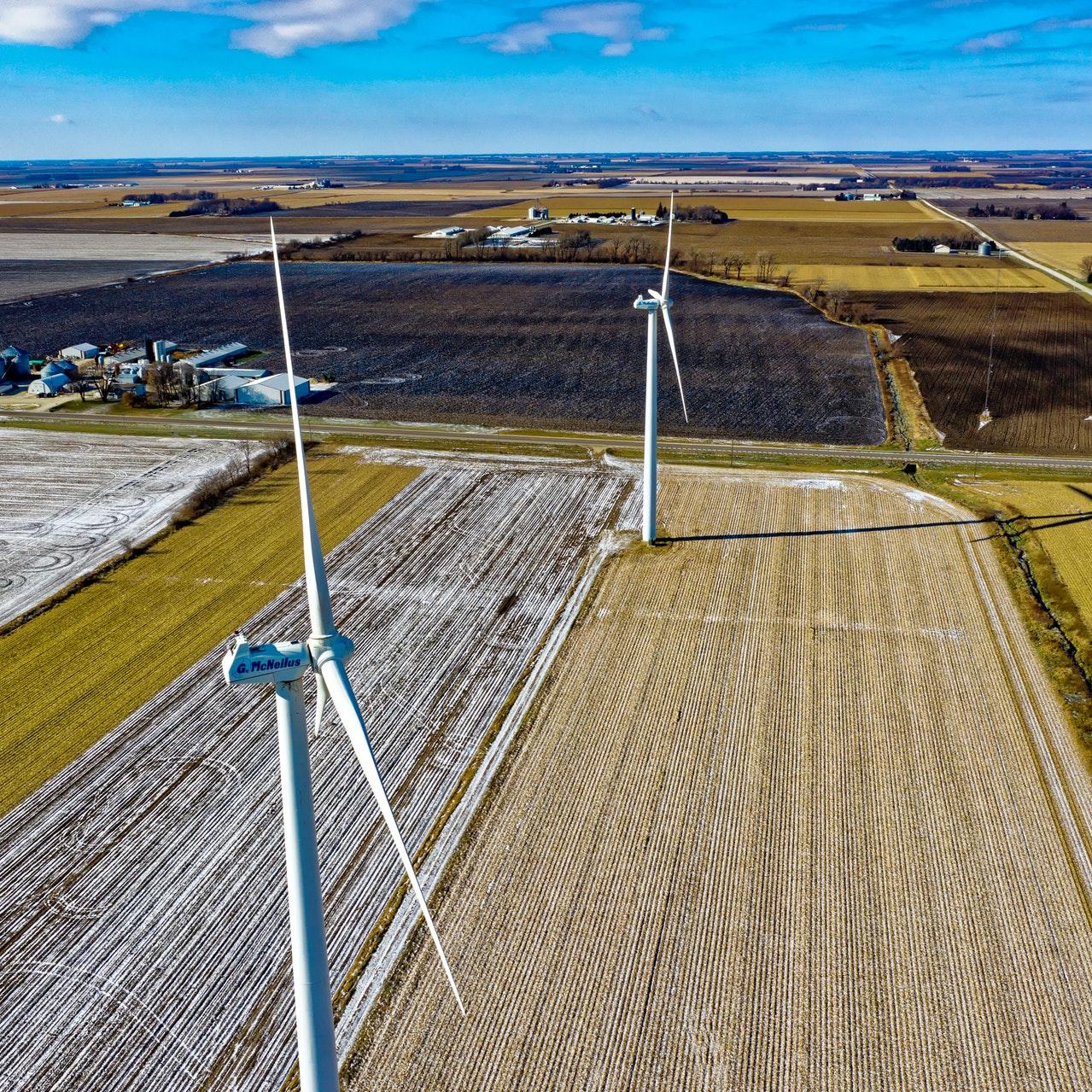
You may know Mars Inc. for its timeless candy such as Snickers and M&M’s, and to a lesser extent, brands such as Uncle Ben’s Rice and Pedigree pet foods. But this $33 billion company is also taking on some compelling projects that the company says will make the company much more “sustainable in a generation.” One example of Mars’ investments in sustainability is the Mesquite Creek Wind Farm in western Texas.
Announced last year, Mesquite Creek generates 200 megawatts of wind power, enough to electrify 61,000 American homes, or the equivalent of what Mars claims is sufficient to power its entire U.S. operation. Bloomberg reported the project’s cost, including its 118 GE wind turbines, was $345 million. The wind farm was financed largely by Sumitomo Corporation of Americas, which previously had invested in five utility-scale renewable power projects in the U.S.
This wind farm, located halfway between the Texas cities of Lubbock and Midland, represents a huge step forward for Mars’ promise to eliminate all greenhouse gases from its global operations by 2040. One goal of the company was to reduce its fossil fuel energy consumption and greenhouse gas emissions by 25 percent this year—and Mesquite Creek allowed Mars to stay on target this year, according to Kevin Rabinovitch, Global Sustainability Director of Mars. “This wind farm keeps us on the path to meet our 2040 goals without adding cost to the business,” said Rabinovitch during a telephone interview earlier this week.
Despite the slump in oil prices, which most analysts say will stay well below $50 a barrel for the foreseeable future, investments in renewable power projects keep surging because they have reached cost parity with fossil fuels. Renewables are also a way for companies to hedge their operational costs in the event petroleum prices spike again—after all, the only thing we can predict about the cost of oil is that it is unpredictable. Renewable energy contracts, often underwritten as a power purchase agreement (PPA), allow organizations to purchase electrical power at a set price for the long term, as long as 20 years. Mesquite Creek itself is proving to be an attractive investment, due to Duke Energy’s recent purchase of a stake in the wind farm.
In the case of Mars, the company partnered with Sumitomo to underwrite the project. That power generated at Mesquite Creek will be sold on the market; Mars, in turn, receives renewable energy certificates (RECs) to compensate for its standard electricity consumption within the U.S. “This allows us to invest in renewable energy, even though most of our facilities here in the U.S. are not necessarily best suited for a retrofit with renewable energy technologies such as solar,” explained Rabinovitch. Mars, which traces its history back to 1911, has 70 offices and warehouses across the U.S. Most sites, however, are only suited to smaller scale projects, such as a two-megawatt solar installation at one of its New Jersey facilities.
At a time when the debate over climate change is often polarizing and shrill—especially in the lead up to the COP21 talks in Paris that start in late November—Rabinovitch’s outlook was decidedly refreshing. Much renewable energy and climate change talk is buried in public relations language and generalities, but Mr. Rabinovitch eschewed such jargon. “We are trying to commit to targets based on science—this is not just about what we should or want to do, but we base our decisions on the external facts that scientists present to us,” he added as we wrapped up our interview.
As any company touting such a project would, Mars puts the Mesquite Creek’s impact in the context of what the company is about. The wind farm’s annual 800,000 megawatt-hours of wind power is enough to make 13 billion chocolate Snickers bars or 125 million 40-pound bags of Pedigree dog food—with perhaps spare power to dish out some packs of Juicy Fruit Gum and tins of Altoids.
But in all seriousness, Mars is taking a holistic view towards decarbonizing its global business—while working to ensure it has reliable sources of raw materials to keep its operations running in the long term. Aware that developing countries are bearing the brunt of climate change, Mars says it is working with its suppliers to ensure it has reliable and sustainable streams of rice, palm oil, fish, and of course, cacao. Mars, says Rabinovitch, has worked with cacao farmers on techniques such as better pruning, effective soil management, smart watering and the incorporation of more resilient cacao varietals. The result has been an overall tripling of yield from half a ton to 1.5 tons of cacao per hectare. “We want to prepare these farmers in the event of climate change—so even if they have a bad harvest, they will still come out ahead. This is just another way we are working to prevent the future from being different from what we think it will be today,” he said.
Many companies are great at setting goals when it comes to clean energy and climate change, and whether all this comes to fruition in 2020 or 2025 remains to be seen and leaves many of us dubious. But Mars has built a solid track record around these challenges, and will be a most interesting company to watch in the coming decade.
Image credits: Tom Fisk and Peter Leahy via Pexels
What Happens in Paris Won’t Stay in Paris: A Guide to the Upcoming Climate Negotiations


By Liz Hardee
This December, delegates from both developed and developing countries will gather in Paris for what promises — one way or another — to be the most historic set of climate negotiations the world has ever seen. The stakes could not be higher. According to the best available science, we must be on a downward emissions trajectory worldwide by 2050, in order to limit warming to 2 degrees Celsius and protect ourselves from climate change’s worst impacts. Most believe we have only a decade in which to take the actions that would put us on this path.
Many articles on the topic have been quick to point out that the emission reduction pledges made by countries ahead of these talks are insufficient to meet the 2-degree target. This argument largely (and cynically) misses the point: these negotiations are likely to be much more successful than any prior attempt.
Here are a few important points about the Paris talks:
This is the first attempt ever made by all U.N. member nations to set internal emission reduction goals from the bottom up. The Paris negotiations are a starting point, not an ending point. Though many nations have already begun the cycle of setting and meeting emission goals (like the EU member nations, and notably, China), there has never been a comparable worldwide effort; focused from the bottom up, with each country setting what it believes to be a reachable internal goal. It is true that no one country can mitigate climate change alone, but this “show of good faith,” if successful, will prove that it is possible for the world to come together around this planetary problem, and lay the groundwork for future agreements with more ambitious goals.
The ending date for national targets is catching attention. Most countries’ goals have been centered on the year 2030. This is the year, for many, that they expect to have reduced emissions 25% or more from current levels — and the primary reason experts argue that these targets will not be enough. If a country sets a goal for 2030, it is likely that 2030 would also be the first year they would think about revisiting and strengthening that goal. Since greenhouse gases are persistent and can stick around in the atmosphere for long periods of time, goals that can be revisited earlier are more likely to be effective. If you hear environmental advocates call for 2025 targets, this is why.
Momentum is already building, and what happens in Paris won’t stay in Paris. Jurisdictions that have set climate goals know from experience that setting an initial goal is the first step in a process of rapid decarbonization. California, which passed its landmark Global Warming Solutions Act in 2006, recently adopted Senate Bill 350, which significantly increases the adoption of renewables and building energy efficiency, making its already unilateral targets even more ambitious.
France, host to the upcoming climate talks, has recently announced a plan to decrease fossil fuel consumption by 30 percent and increase energy efficiency 50 percent by 2030—above and beyond what is required of the country under the EU’s cap and trade system. These individual and incremental actions have added up over time; in 2016, roughly one quarter of all emissions worldwide will be under some form of carbon pricing (China, so often mischaracterized as “doing nothing” to address emissions, will have a national carbon pricing mechanism next year). As more countries come to the table with plans for meeting those goals, we are likely to see this percentage rise.
The biggest sticking point is philosophical, not scientific. The factor most likely to give negotiators a hard time is not whether any one country’s targets are strong enough; it is whether those countries most responsible for climate change will help those least responsible to implement low carbon development strategies. The Green Climate Fund — paid into by wealthier countries for this purpose — was designed to help. It is estimated that efforts to help developing countries mitigate and adapt to climate change will cost $100 billion per year, but the Green Climate Fund contains only $10 billion in pledges so far. The success of these negotiations, therefore, rides primarily on whether developed countries can demonstrate a serious commitment to providing aid to developing nations.
In the end, though Paris will not get us to 2 degrees Celsius, it is likely to give us something the world desperately needs: a new hope that a stabilized climate is not out of reach.
Image credit: Flickr/Moyan Brenn
Liz Hardee is the Senior Analyst for The Climate Trust.
Do You Know Your Soy Footprint?


It was once the manna for health food maniacs and vegetarians, but soy has become the Martin Shkreli of food. Almond milk has knocked off soy milk as the number one non-dairy milk of choice in the U.S.; the food is often maligned as a toxic allergen; and men’s health magazines run warnings of how soy possibly can alter one’s hormonal balance due to estrogen—though, peeking down my shirt, I do not see any such evidence from 20+ years of eating and drinking soy products, way before soy was cool and long after it has been shunned.
After all, soy is high in protein, can serve as a solid meat alternative and some soy in the diet could be beneficial for the heart.
But much of soy’s perception problem stems from what is occurring worldwide in the agriculture sector. South America now produces more soybeans than in North America, where soy has long been a lucrative commodity. Brazil has transformed much of its rustic savannah-like cerrado into massive farms, which include soy as a new cash crop. Currently 85 percent of the world’s soy crop is crushed into soybean oil or meal. Of all the soybeans on earth that are crushed, 98 percent of them are processed into animal feed, due to the world’s growing demand for animal protein. So that organic, fluffy, healthful tofu or fake soy meat you are buying at the store, while benign, is not making a difference on the global soy market. You’re not causing the displacement of local crops or fomenting deforestation. But, a bevy of other consumer products are linked to soy’s disruption to the environment and communities.
To that end, the Paris-based Consumer Goods Forum (CGF), an international coalition of retailers and consumer goods manufacturers, says it is taking steps to solve this problem. CGF has developed a framework that it believes can help companies manage the soy consumed within their supply chains. As more companies realize their 2020 promises to reduce or even eliminate deforestation are only a paltry five years away, they need guidance on how to achieve goals. Should this framework catch on and succeed, we may start to hear about a “soy footprint” in the same vein as carbon accounting, water footprint, and timber certification.
Companies criticized for the environmental impact, and seeking to correct those trends, confront a bevy of challenges. As with palm oil, soy is often purchased through several layers of vendors, posing a challenge to traceability. Soy is reported to encroach everywhere from the Amazon to lesser-known but equally fragile ecosystems in the U.S. and Canada. And how much soy is too much soy? A meat company’s feed lot in one region may use a different formulation from one just a few hundred miles away.
The answer, according to CGF, is the “Soy Ladder.” This framework, based on research data, leverages data in a way analogous to how the U.S. Dodd-Frank Act measures risk due to conflict minerals. These guidelines offer an idea of how to measure the prevalence of soy within a company’s supply chain, and whether that company’s consumption puts that company at risk of contributing significantly to deforestation. For example, soy directly purchased and controlled is labeled as “Tier 1.” Soy used in feed for animal, eggs and dairy products comprises the next tier. Derivatives such as lecithin used in chocolate or soy oil in margarine comprise the final tier.
Whether these guidelines, which are still in flux, will be effective remains to be seen. Businesses will still have leeway as to how intensively they wish to report their soy consumption. Many may choose to report only direct purchases of soy or a few layers delineated by this framework—others may just want to report soy purchased from regions where deforestation is a definite risk. The result could be a more educated public—or one further spooked once they have a greater understanding of their total soy consumption.
Image credit: CSIRO
The U.N. Tackles Sustainable Tourism, Sort Of
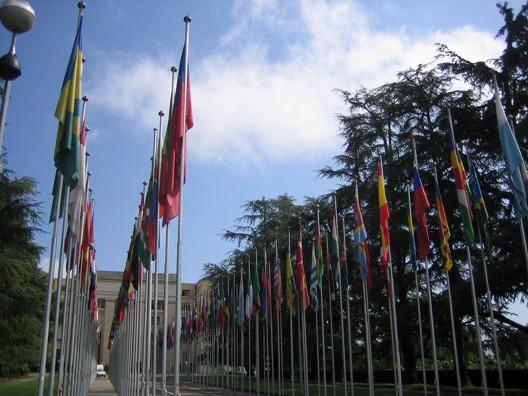

By Kate Drew
The word travel is enticing — the word tourist, not so much, and tourism, even less so. But, put the word sustainable in front of tourism, and it becomes something fine. It becomes traveling with the intent to make a positive impact somewhere. And that sounds better. Taking a tour of a small village in Peru that connects visitors with local women making handmade crafts warms the heart far more than gorging on the buffet at an all-inclusive resort.
In three of their 169 targets, the United Nations' proposed Sustainable Development Goals address sustainable tourism — behind which is a strategic yet little discussed effort to promote development from within a given locale. Although the General Assembly has in the past recognized the value of sustainable tourism as a tool to eradicate poverty, this is the first time specific objectives have been attached to it.
The Sustainable Development Goals build on an earlier set that was agreed upon by the U.N. in 2000 with the aim of setting an agenda for development across the world. The targets that relate to sustainable tourism pinpoint job creation, promotion of local culture, evaluation of the impact of sustainable tourism and improvement in the effective use of marine resources. All of them allude to an approach to sustainable tourism that builds on the traditional one.
A typical indicator of tourism’s impact on development has been the service industry — but this leaves a lot out. The new targets include using natural resources and other economic sectors as indicators of success. They are designed to help governments implement better strategies that boost their economies through tourism.
Helena Rey, program officer at the United Nations Environment Program, said that if countries start implementing policies and strategies for sustainable tourism, they could then achieve or contribute to their own development. "Tourism can be a tool for development,” Rey said. “For some countries, tourism is the main source of income. And it should be taken seriously.”
World Travel and Tourism Council data shows that global contribution from travel and tourism to the world’s GDP was $7.6 billion, or 9.8 percent of the total, in 2014. It is expected to rise by 3.7 percent in 2015.
“It’s not the first time that tourism has been recognized by the General Assembly—but it’s the first time that specific indicators and targets have been requested,” Rey said. “This is really a turning point in how countries will look at their tourism development.”
That may be, but not everyone thinks the path the targets point to is the right one. Marie-Danielle Samuel, co-founder of Yachay Wasi, a Peruvian-focused NGO, said that indigenous peoples and local communities are largely left out of the document — which hinders attempts to properly define sustainable tourism. In a recent statement, she argued for the U.N. to incorporate the Commission on Sustainable Development’s 1999 definition, which stated that “if more indigenous ownership could be developed, the perception of tourism as a foreign-dominated sector would be reduced.”
The targets are workable, of course, but they don’t acknowledge what sustainable itself means, Samuel said. In her statement, she called the document “an un-realistic catch-all for all the ills of modern world.”
It’s not surprising that the U.N.’s attempt to narrow in on tourism is still too broad for critics. The entire set of Sustainable Development Goals has drawn criticism from media outlets for being too diffuse and bloated. “Moses brought ten commandments down from Mount Sinai. If only the U.N.’s proposed list of Sustainable Development Goals (SDGs) were as concise,” mocked the Economist in March.
For sustainable tourism, the inclusion of these targets is just a start. There is a roadmap in place, but it is clear that there is more work to be done. “The biggest challenge from now on,” Rey said, “is going to be implementation.”
Countries will need to measure the effectiveness of their strategies, and will need guidelines to do so — which the U.N. is in the process of addressing. But this is yet another process that will take time. Indicators to help governments monitor their progress in meeting the targets have not been agreed upon yet, said Faye Leone, content editor at the International Institute for Sustainable Development, adding that formal recommendations are slated for proposal in November.
Drawing a line from the U.N. to individual governments, and then finally to the tourism sector is difficult. And even drawn, the path isn’t always clear. Tourists, even those with admirable intentions, often end up benefitting foreign entities, as opposed to local or indigenous communities—this is called leakage. Their money is funneled in and then right back out, when locals do not have control over their own sites and attractions. In promoting sustainable tourism, there needs to be emphasis on the benefit to local communities, explained Samuel.
“Some of the profits should go to those communities — officially,” she said. “That should be something that the U.N. pushes.”
Image credit: Flickr/Tony
Kate Drew is an M.A. candidate at the Arthur L. Carter Journalism Institute, where she is pursing a dual degree in Journalism and International Relations. She completed her undergraduate degree in Finance and International Business at Villanova University in 2010, and worked in the five years following as an Editorial Analyst at Value Line Publishing. Her research interests range from international economics to intelligence and security.
Why Volkswagen’s Cheating On Emissions Tests Matters


A few years ago, I wrote an article about the Volkswagen Group committing to strict carbon emissions limits. Recently, someone on Twitter asked me how I now feel about VW. I answered that I am disgusted.
Why am I disgusted with the automaker? By now, most of you know the Environmental Protection Agency found certain VW models, possibly as many as 11 million cars in total, had been rigged with a device that reduced nitrogen oxides (NOx) emissions when tested. An analysis by the Guardian found that those U.S. VW vehicles “would have spewed between 10,392 and 41,571 tons of the toxic gas into the air each year if they had covered the average annual U.S. mileage.” Complying with the EPA’s standards would have meant those vehicles would only have emitted 1,039 tons of NOx per year.
Both the EPA and the California Air Resources Board (CARB) initiated investigations into VW. The groups found the device designed to cheat emissions tests after researchers at West Virginia University did an independent analysis. After the EPA and CARB sent letters to VW, the company admitted the cars contained the devices.
“Using a defeat device in cars to evade clean air standards is illegal and a threat to public health,” said Cynthia Giles, assistant administrator for the Office of Enforcement and Compliance Assurance, in a statement. “Working closely with the California Air Resources Board, EPA is committed to making sure that all automakers play by the same rules. EPA will continue to investigate these very serious matters.”Why is that such a big deal? NOx contributes to ozone and fine particulate matter (PM2.5) pollution. In the San Joaquin Valley where I live, both types of pollution are all too common. The Valley has one of the nation’s worst air basins. PM2.5 is linked with a slew of health problems, including asthma. Valley residents have some of the highest asthma rates.
So, what VW did truly does endanger public health. As the Bloomberg Review states, “What Volkswagen did appears to be in a category all its own, and it deserves special condemnation.” However, Bloomberg adds, “But other carmakers game the system, and regulators tolerate it. That is the dirty little secret of emissions and efficiency testing, and the EPA needs to clean it up.”
Not only does VW need to do what needs to be done to ensure this kind of cheating on emissions tests never occurs, but the EPA also needs to do a better job of testing and enforcing its own standards. The American people, including my fellow Valley residents, deserve better.
Image credit: Flickr/DaDaAce
The AP Bans Use of Climate Change Denier and Skeptic


Anyone who has a degree in journalism will remember sitting through classes where the Associated Press’ (AP) Stylebook was regarded as the bible of journalists. And when the AP makes changes to that bible, it's major. And changes have been made in regards to climate change.
The Stylebook now states that the AP will “avoid the use of 'skeptics' or 'deniers'" in regards to global warming and will instead use the term 'doubters.' The Stylebook furthers states: “To describe those who don’t accept climate science or dispute the world is warming from man-made forces, use climate change doubters or those who reject mainstream climate science. Avoid use of skeptics or deniers.”
What is the big deal about using the term 'skeptic' in regards to people who deny climate change is occurring? According to the AP, scientists who consider themselves to be true skeptics “complain that non-scientists who reject mainstream climate science have usurped the phrase.” Those true skeptics prefer the term “climate change denier.” So, why is the AP banning the term 'denier' as well?
The AP’s stated reason is that “those who reject climate science say the phrase denier has the pejorative ring of Holocaust denier so the Associated Press prefers climate change doubter or someone who rejects mainstream science.” In other words, the AP is concerned about what climate change deniers (yes, I’m using the word) feel.
Consider that the majority of the world’s climate scientists not only say climate change is occurring, but also that it is manmade. A study published in 2013 in Environmental Research Letters reviewed scientific literature on climate change and found that 97.2 percent of all climate scientists concur that climate change is manmade. That is an overwhelming consensus. So, why is the AP so concerned with the feelings of the climate change deniers? I don’t have the answer.
Ronald A. Lindsay, president and CEO of the Center for Inquiry, is glad about the AP dropping the use of the word skeptic. He said that the Center for Inquiry is “very glad that the word ‘skeptic’ will no longer be used to describe deniers of climate science, such as Sen. James Inhofe, who claims to believe that global warming is a hoax.”
However, Lindsay thinks that replacing skeptic with the word doubter is a problem. “The AP’s journalism is read throughout the world, and heavily influences the public’s understanding of crucial issues such as climate change,” he said. “Referring to deniers as ‘doubters’ still imbues those who reject scientific fact with an intellectual legitimacy they have not earned. The general public, we fear, will still not get a clear picture of which public figures are basing their positions on reality, and which are not.”
The Washington Post's Erik Wemple wrote in a blog post that the AP “managed to create a contradiction” by dropping the use of the term “denier.” He added that the AP “have succumbed to a specious argument that the term 'denier' can’t be paired with another term without tinging it with Holocaust implications.” To Wemple, that “seems like a dicey precedent.”
Image credit: Flickr/kartfamily
Industry-Led Water Innovation is a Vital Investment in Our Future


By Mehmood Khan, PepsiCo
Water scarcity is one of the greatest risks facing humanity and the global economy. Water shortages—from the U.S. to Peru to India—are impacting every facet of our society, including our global food supply. The UN estimates that by 2025, 1.8 billion people will live in countries or regions in which water is scarce, and approximately two-thirds of the world’s population could soon be living under water-stressed conditions. With ratification of the UN Sustainable Development Goals just days away, governments, as well as business leaders must take action to meet these challenges.
Water is a fundamental human right, and water stress has distinct, deep consequences in communities around the world. It is the responsibility of every company, government and public institution to develop solutions that meet acutely local needs, and scale those with widespread applicability to drastically improve water availability and efficiency.
The food and beverage industry, for example, must redouble its focus on innovation and collaboration, to do more with less. This work includes product reformulations, sustainable agricultural practices and manufacturing and operational efficiencies, all of which can lead to water efficiency gains.
This is not simply good for society. Promoting water stewardship is also a strategic investment in long-term business resilience and sustainability. PepsiCo for example, decreased its absolute water use by approximately one billion liters last year and achieved cost saving of approximately $17 million in 2014 alone from reducing our water use per unit of production. Overall, we have reduced our water use per unit of production by 23% since from 2006 to 2014, already exceeding our public target of a 20 percent reduction by the end of 2015. We report on these efforts in our newly released 2014 Sustainability Report and at the sustainability micro-site HowWillWe.com.
All industries are being impacted by the realities taking shape today, including droughts and extreme weather, and we applaud other companies that share our commitment to addressing this issue and contributing to meaningful solutions. Diageo is a great example. It has recently released its Water Blueprint, a strategy that outlines how the company will protect and manage its water resources globally, especially in the water-stressed areas where a third of its production takes place.
We can also learn from pioneering startups and benefit from cutting-edge technology. PepsiCo is developing an innovative approach to farming potatoes used to make our Lay’s chips and Walkers crisps. Working with farmers and academic partners in the U.K., including Cambridge University, we are deploying technologies through our “50 in 5” program to reduce the carbon footprint and water used to grow potatoes by half over a 5-year period. We have made great progress so far, enabling growers to decrease water use by 31 percent by the end of 2013 and cut their carbon footprint by 42 percent by the end of 2014, and we are on target to reach both our water and carbon footprint goals by the end of this year.
Partnerships are crucial, because global value chains are so large and involve many interconnected players. The public, private and non-profit sectors must work together. We have embraced this spirit of collaboration to reduce water usage in our operations and help to provide access to safe water in communities where we do business. For example, through the PepsiCo Foundation and in partnership with non-profit organizations, such as Water.org, Safe Water Network, Columbia Water Center, the Inter-American Development Bank, China Women’s Development Foundation and 2030 Water Resources Group, among others, we are helping local communities in Brazil, China, Columbia, India, Jordan and Mexico to provide access to safe water for millions of people through initiatives that include water conservation, distribution, purification and hygiene. It is through these kinds of collaborations that we have reached our goal to provide access to safe water to six million people in developing countries one year ahead of our target.
Systemic changes across sectors and among competitors will encourage innovation and wider adoption of proven tools and practices. To make an impact, we must look at the entire water use system, from end to end and embed sustainable water use into our products from the start. And while business has the ability and the responsibility to do more to address global water issues, governments should also promote and incentivize smart water use with tools such as research and development tax credits, matching funds and regulatory reforms to create a legitimate “enabling environment” that frees capital and stimulates sustainable, holistic water solutions.
Only by working together and rethinking our approach to global water stewardship—just as we have begun to shift our thinking on the issue of carbon emissions—can we enable water to be a resource that is abundant and flexible enough to meet the world’s needs in coming decades.
Dr. Mehmood Khan is PepsiCo’s Vice Chairman and Chief Scientific Officer, Global Research and Development and chair of the company’s Sustainability Task Force.
ICRS marks anniversary with first honorary fellows


To mark its first anniversary, the Institute of Corporate Responsibiity and Sustainability (ICRS) has announced its first honorary fellows.
They are: Philippa Foster Back, director of the IBE (pictured left), Sir Ian Cheshire, chair of the Prince of Wales’ Corporate Leaders Group on Climate Change and former CEO of Kingfisher plc, Dame Julia Cleverdon, vp of BITC and chair of the National Literary Trust (pictured right); Professor David Grayson, director of the Doughty Centre at Cranfield University; Helena Morrisey, ceo of Newton (Asset Management), chair of the Investment Association and Founder of the 30 Percent Club and Jonathon Porritt, co-founder of Forum for the Future and former chair of the Sustainability Commission.
Claudine Blamey, chair of the ICRS (pictured centre), said: “In appointing our first honorary Fellows we wanted to recognize those who have an a transformative impact on business and wider society while also demonstrating a genuine commitment to the development of the profession.
"Those who are being honoured today have played a leading role in implementing one or more of the Institute’s Guiding Principles. As such, they are more than worthy recipients and will act as powerful advocates and ambassadors for the Institute in the years ahead.”
In addition to welcoming the six honorary Fellows, the Institute has also announced that applications for fellowship will be opened to ICRS Members from mid-October.
Blamey added: “Fellowship sets the bar for excellence in terms of contribution, service and leadership. There is a huge pool of talent within our profession and we’re very much looking forward to receiving applications from those Members who are keen to take the next steps in their careers.”
Zero to 100: Companies Double-Down on Climate Action
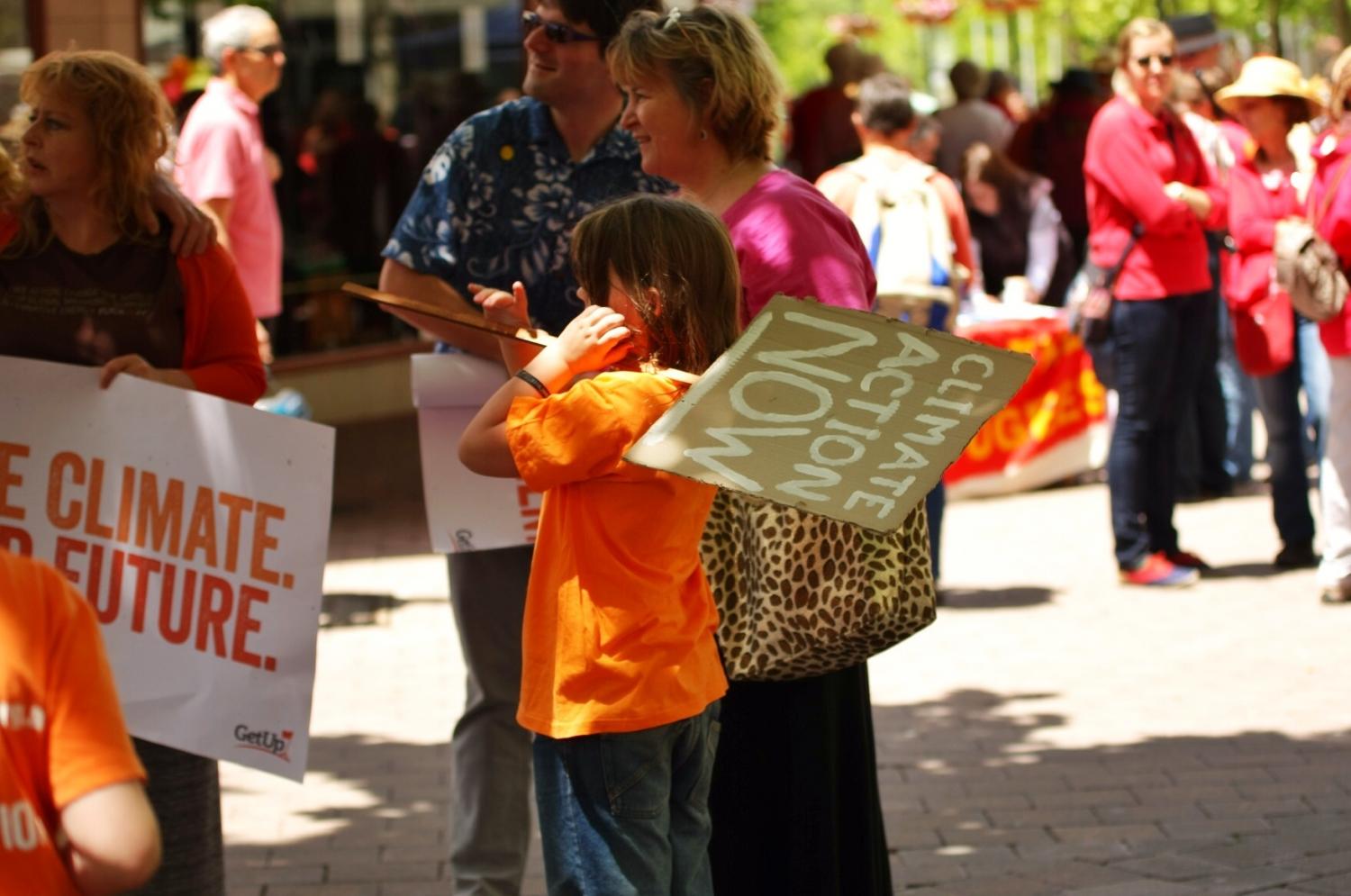
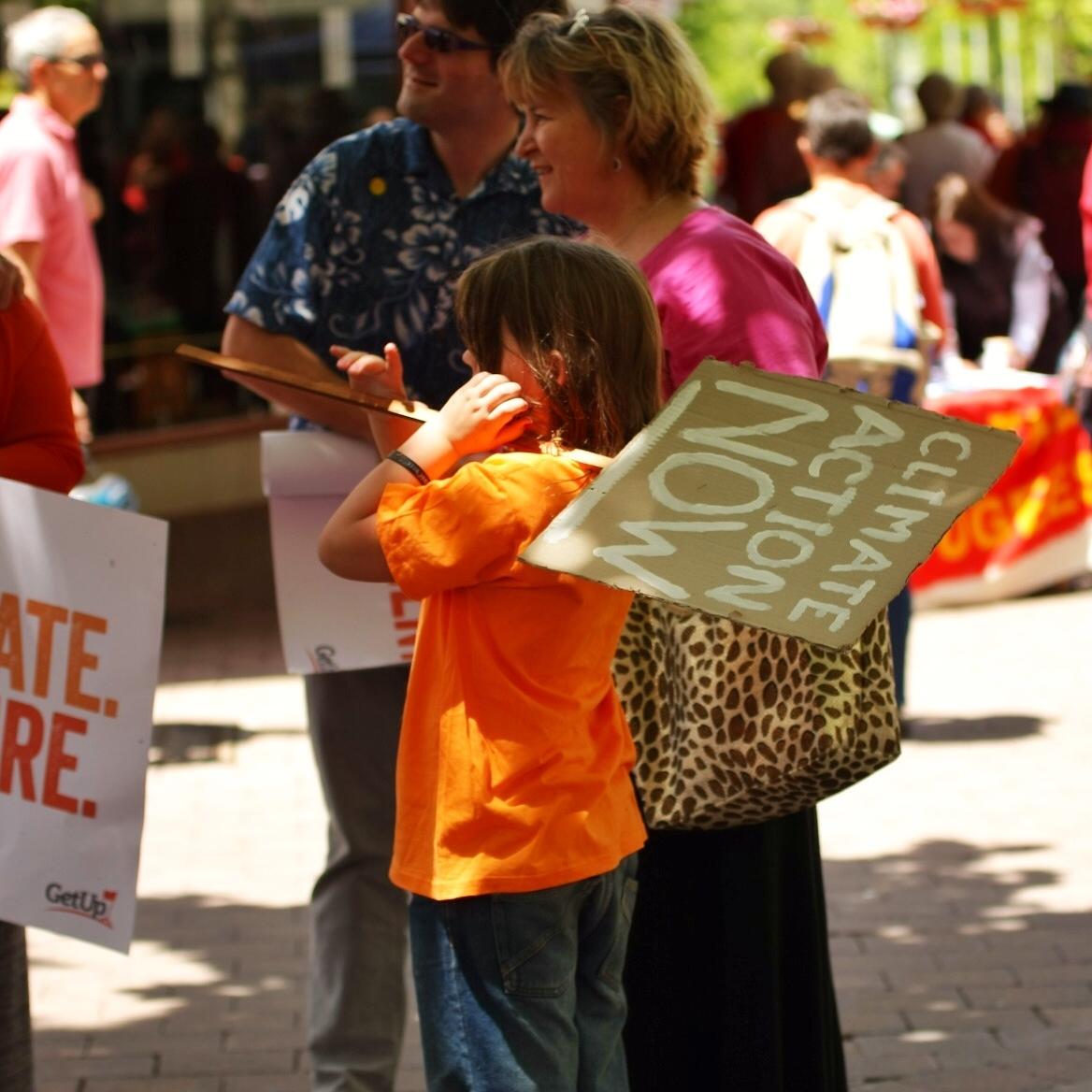
It's the fourth day of Climate Week NYC, and the big corporate commitments keep rolling in. On Wednesday, nine Fortune 500 companies pledged to meet 100 percent of their electricity needs using renewable sources. Later that day, nine more linked up with the World Resources Institute and WWF to spur progress on renewables.
The firms -- Amazon, DuPont, Equinix, Etsy, Intuit, Microsoft, Sealed Air, Starbucks and Starwood -- signed on to the Corporate Renewable Energy Buyers’ Principles, developed by large energy buyers as a way to advance renewables and add their perspective to the future of the U.S. energy system.
But, along with going 100 percent renewable, sustainability leaders are asking politicians and the business community to consider another number: zero.
Adding to the growing momentum at Climate Week, five global companies pledged to achieve net zero emissions by 2050. For those unfamiliar with the term, net zero refers to limiting global carbon emissions to the point where they balance the world’s ability to absorb that CO2. In the context of business supply chains, this involves measuring emissions released against emissions saved through things like renewable energy projects, reforestation and offsets. It's a goal they call bold but necessary if we are to limit temperature rise to 2 degrees Celsius.
These corporate leaders hail from different sectors and span five continents. Western readers will likely recognize consumer company Unilever and international investment group Virgin, but the rest may be unfamiliar: Chinese construction company Broad Group; African telecom Econet; and Brazilian cosmetics manufacturer Natura (which some may know as the largest publicly-traded B Corp).
But these firms do have one thing in common: They're all associated with the B Team, a nonprofit launched in 2013 by Sir Richard Branson and Jochen Zeitz with the aim of doing better business for both people and planet.
The path to net zero
These corporate pledges are part of a broader effort by the B Team to kickstart a net-zero economy. A few months after the U.N. met for COP20 in Lima, Peru, last year, the nonprofit called on world leaders to adopt an international net-zero target. Now with COP21 -- and the promise of an international climate agreement -- only a few months away, the group is doubling-down on its calls to action.
The initial trajectory laid out by the Intergovernmental Panel on Climate Change (IPCC) called for net zero emissions by 2070. But the panel noted that this target would still only give us a 66 percent chance of staying beneath the 2-degree threshold.
“That’s not a gamble we would take in our businesses or our personal lives – why are we risking the planet?” Richard Branson, co-founder of the B Team and founder of Virgin Group, said in a statement.
The group ultimately landed on a target year of 2050, a goal it hopes will be part of the political process at COP21, Keith Tuffley, managing partner and CEO of the B Team, told TriplePundit.
"The one thing we're really trying to get through [to COP21 delegates] is: Business requires and has been looking for an ambitious, action-oriented long-term goal out of Paris," Tuffley said. "The idea of an intellectual 2-degree threshold or a parts per-million is no longer enough. We actually know what we need to do to get there -- and we need to get to net zero."
Calling other climate action groups like RE100 and We Mean Business "key enablers" in the low-carbon transition, Tuffley said the B Team hopes early actors will spur a larger wave of corporate commitments on climate change.
It seems some already have the same idea: On Tuesday, global industrial giant Siemens announced plans to cut its carbon emissions in half by as early as 2020 and to be carbon neutral by 2030. And it's willing to shell out more than $110 million over the next three years to make it happen.
Are businesses for real?
Some may be skeptical of business commitments -- and even more skeptical of general "calls-to-action" that appear to put the onus on other groups (like government or NGOs) to take action. Just this week, as firms lined up to announce their shiny new Climate Week commitments, London-based nonprofit NGO InfluenceMap released a study revealing that 45 percent of the world's largest companies actively obstruct climate legislation.
The stark contrast between the leaders and the laggards is only becoming more pronounced. Businesses at the forefront are not only recognizing climate change risks within their supply chains, but also acknowledging climate action as a business opportunity too great to ignore.
As Branson put it: "Taking bold climate action now has the potential to unleash the full power of business and lift millions of people out of poverty. We're the first generation to recognize this and the last generation to have this opportunity."
Of course, the laggards will always be close at hand -- especially in business where profit is king. Therein lies the role of government and the importance of COP21. By creating an international standard, even slow-movers will be forced to step up, if for no other reason than to maintain regulatory compliance.
"The key piece that the government can help create is a race to the top, rather than a herd languishing and waiting for leadership to appear," Tuffley told us. "Leaders throughout business are appearing anyway ... despite the lack of a very clear long-term goal at a global level.
"[But] we're hopefully giving governments the message: 'Business is operating ahead of current political consensus. So, please create certainty to let more businesses effectively create the low-carbon economy.' The more certainty they can provide on the long-term goal, the more business and investors are going to do it for themselves."
Is net zero the future? Only time will tell. But with top firms getting bullish about the benefits of climate action -- not to mention divesting from fossil fuels to the tune of $2.6 trillion -- the potholes on the road to a bold agreement in Paris seem to be filling fast.
Image credit: Flickr/David Burke